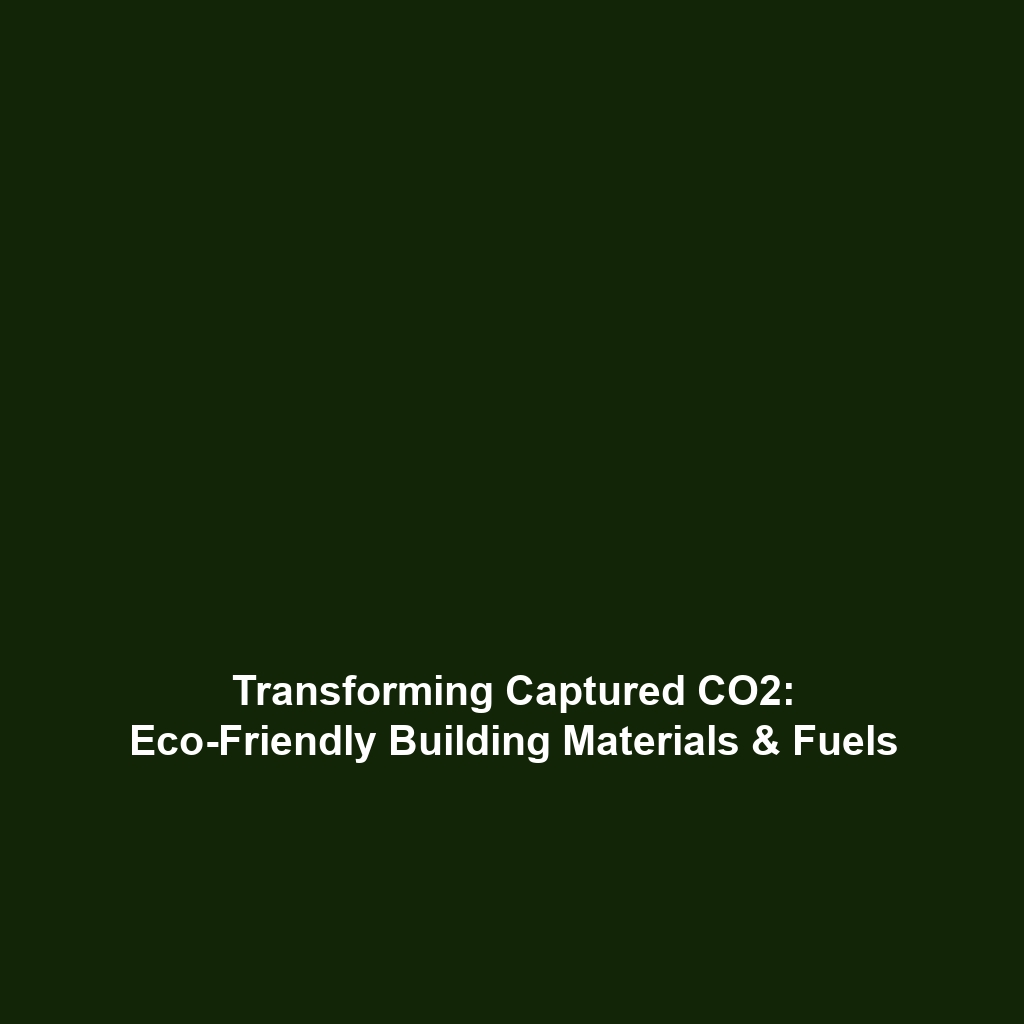Carbon Capture & Storage: Earning Carbon Credits through CO2 Capture
The urgency to combat climate change has spurred innovative solutions such as Carbon Capture & Storage (CCS), where companies that capture and store CO2 can earn carbon credits. These credits can be traded in emissions markets, offering companies the opportunity to offset their greenhouse gas emissions while generating revenue. This mechanism not only incentivizes companies to invest in CCS technologies but also plays a vital role in achieving global emission reduction targets.
Key Concepts
To understand the significance of carbon credits in the realm of CCS, it’s essential to familiarize oneself with several key concepts:
- Carbon Capture: The process of capturing carbon dioxide emissions from sources like power plants and industrial processes before they enter the atmosphere.
- Carbon Storage: Involves the safe storage of captured CO2 underground in geological formations.
- Carbon Credits: Represent a permit that allows the holder to emit a specific amount of carbon dioxide, effectively serving as a form of currency in emissions trading markets.
- Emissions Markets: Platforms where carbon credits are bought and sold, creating a financial incentive for companies to reduce emissions.
Applications and Real-World Uses
Companies that capture and store CO2 can earn carbon credits, which can be traded in emissions markets, have various real-world applications:
- Power Generation: Coal and gas power plants are adopting CCS technologies to reduce their carbon footprints and earn carbon credits.
- Industrial Processes: Industries such as cement and steel manufacturing are integrating CCS to lower emissions while monetizing carbon credits.
- Oil and Gas Sector: Enhanced oil recovery (EOR) techniques utilize captured CO2 to extract additional oil, simultaneously reducing atmospheric emissions and generating carbon credits.
Current Challenges
Despite its potential, the application of carbon capture and storage faces several challenges:
- High Costs: The initial investment for CCS technologies can be significant, deterring some companies.
- Technological Hurdles: Continuous innovation is needed to improve capture efficiency and storage techniques.
- Regulatory Uncertainty: Varied regulations across regions may complicate participation in emissions markets.
Future Research and Innovations
The future of carbon capture and storage holds promise with ongoing research and innovations:
- Next-Gen Technologies: Development of advanced materials for more efficient CO2 capture is underway.
- Integrated Systems: Research is focusing on combining renewable energy with CCS to enhance overall sustainability.
- Enhanced Market Mechanisms: Innovative frameworks for trading carbon credits aim to streamline transactions and broaden participation.
Conclusion
Companies that capture and store CO2 can earn carbon credits, facilitating a crucial step towards mitigating climate change. As a vital component of Carbon Capture & Storage (CCS), this process not only supports environmental objectives but also presents financial opportunities for businesses. Moving forward, it is essential to address the challenges facing CCS while exploring innovative strategies to enhance its applications. For further reading on CCS technology and emissions trading, explore our Carbon Capture Technologies and Emissions Trading pages.








